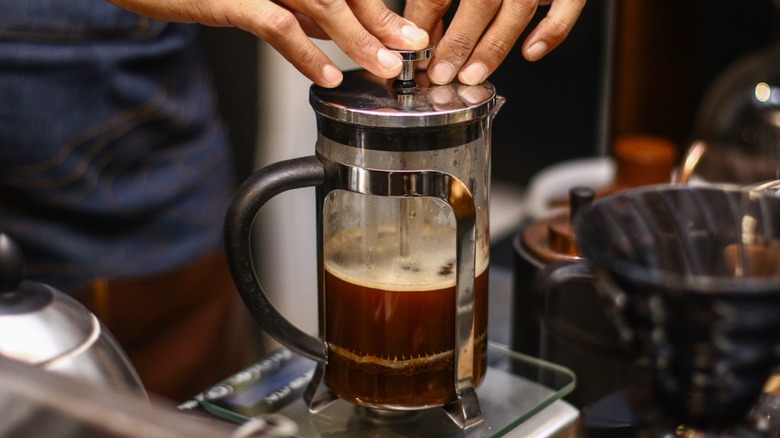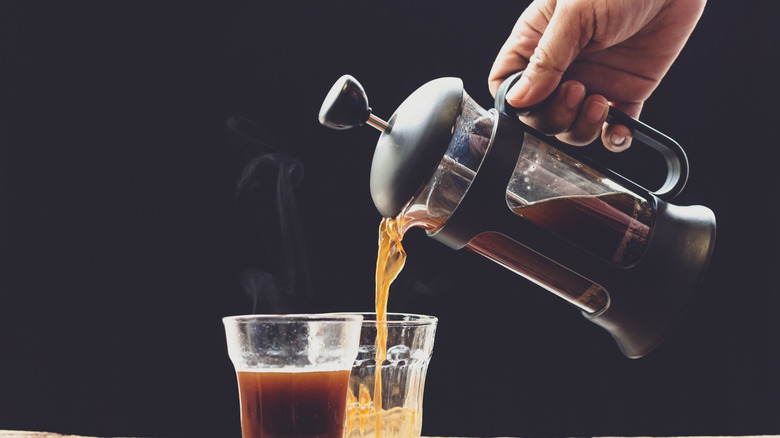You Might Be Using A French Press Wrong
When it comes to using your French press correctly, here's a tip from former World Barista Champion and current TikTok coffee influencer, James Hoffmann — don't plunge your French press.
Hoffmann's method for making stellar coffee that can win awards (or at least get your day started off on the right foot) does take a little more patience, a correctly ground coffee bean, good water, and last but not least, the fortitude to resist shoving that silver coiled spiral plate all the way down to the bottom of your French press. According to Hoffmann, that plate is meant to strain, not plunge.
Hoffmann has good reasoning behind his no-plunge strategy. First off, the act of plunging is not the process that extracts all the flavor from those coffee beans. Secondly, plunging your French press kicks up sediment.
What does extract the flavor is the "bloom" of the freshly ground coffee bean coming into contact with hot water. The bloom is that point that coffee grounds release carbon dioxide, which causes an overlaying foam. The trick is bypassing that carbon dioxide and giving water the most unobstructed contact to the coffee grounds. This is the pivotal extraction of flavor and fragrance that makes a superior cup of coffee.
As baristas dispute whether to plunge or not to plunge, one tip seems universal — breaking that thin crust that develops on top is essential. Here's why.
Coffee connoisseur French press secrets – no plunge, and break that crust
James Hoffmann has distinct opinions on everything coffee, from how to make great espresso without a machine to why you shouldn't drink cappuccinos after this time of day. His Ultimate French Press Technique is likewise a straightforward step-by-step on how to extract the best coffee experience possible. This involves no plunging. Also, after you've poured hot water over your freshly ground coffee and waited at least four minutes, Hoffmann recommends you stir that foamy crust that forms on the top of your brewing water's surface.
Barista Hustle agrees with Hoffmann's advice to stir. Jessica Sartiani of the Barista Hustle team ran a brief comparison and found that whether you choose to plunge or not to plunge, breaking that crust can make the extraction of coffee solubles — caffeine, oils, acids — much more consistent. Sartiani added that stirring the crust "gives the cup more body and complexity."
Hoffmann likes that stir, but he saves his encouragement for what he says is the hardest step of all: waiting. After you have stirred your foam crust and removed those sediments, Hoffmann wants you to occupy yourself for another five to eight minutes while the water extracts all that flavor and aroma and also while any and all leftover sludgy sediments sink to the bottom of the French press. After all that, gently decant, using that coiled plate as a strainer if necessary.

